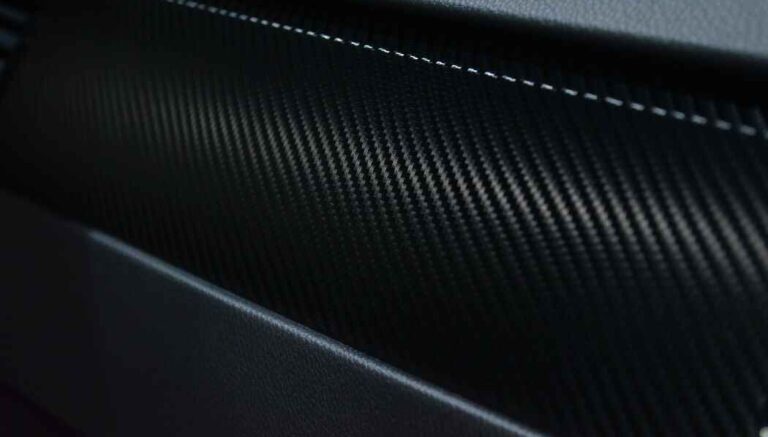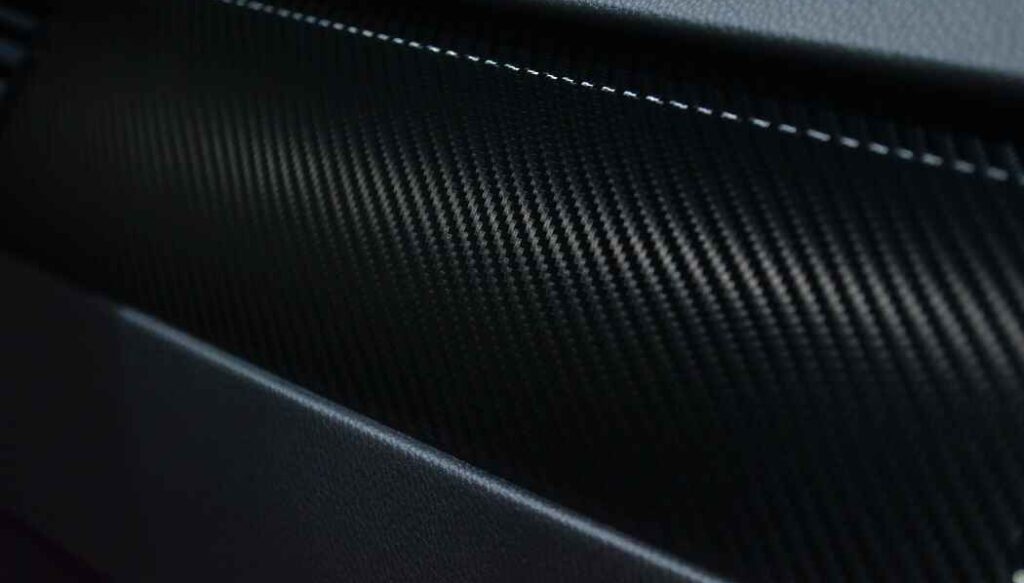
How to Remove Paint from Carbon Fiber?
To remove paint from carbon fiber, gently sand the area using fine-grit sandpaper or use a paint stripper suitable for carbon fiber surfaces.

This guide dives into the meticulous process, providing you with insights and techniques to safely and effectively remove paint, unveiling the pristine beauty beneath while preserving the inherent strength and aesthetics of carbon fiber.
Can You Remove Paint Off of Carbon Fiber?
Yes, removing paint from carbon fiber surfaces can be achieved. Carbon fiber is a lightweight, strong, and often expensive material commonly used in various applications such as automotive parts, bicycles, and sporting equipment.
Removing paint from carbon fiber surfaces requires a delicate approach with care and precision to avoid damaging the underlying material. The unique properties of carbon fiber, including its lightweight and strong composition, demand a gentle touch to avoid causing damage. Using non-abrasive techniques like chemical paint strippers or heat guns set at low temperatures seems to be the most suitable approach.
Regardless of the method you choose, be patient and gentle throughout the process. Avoid aggressive scraping, as this can damage the carbon fiber weave or the underlying resin. Use soft cloths, non-abrasive materials, and a light touch to prevent unintended harm.
However, the success of paint removal from carbon fiber heavily relies on individual factors such as the type of paint, the condition of the carbon fiber, and the level of expertise one possesses.
It’s always recommended to proceed with caution and, if possible, seek advice from professionals who have experience working with carbon fiber materials. If you’re unsure or concerned about potential damage, consulting experts in the field would be the best course of action.
How to Remove Paint from Carbon Fiber?
Removing paint from carbon fiber requires careful handling to avoid damaging the carbon fiber material itself. Here’s a detailed step-by-step guide on how to effectively remove paint from carbon fiber:
Preparation:
Gather Supplies:
- Safety goggles and gloves
- Respirator mask (if working in a confined area)
- Masking tape and plastic sheets (to protect surrounding areas)
- Paint remover or stripper (make sure it’s safe for use on carbon fiber)
- Soft, non-abrasive cloth or sponge
- Plastic scraper or putty knife (preferably with rounded edges)
- Isopropyl alcohol or acetone
- Mild soap or detergent
- Water
- Microfiber towels
- Wax or polish (for finishing)
Choose a Suitable Location: Find a well-ventilated area to work in. Ideally, work outdoors to avoid inhaling fumes from the paint remover.
Wear Protective Gear: Put on safety goggles, gloves, and if needed, a respirator mask to protect yourself from chemicals and fumes.
Prepare the Carbon Fiber Surface: If possible, remove any detachable parts or components from the carbon fiber item. Clean the surface with a mild soap or detergent and water to remove any dirt or debris. Dry the surface completely.
Paint Removal Process:
Test Paint Remover: Before applying the paint remover to the entire area, test it on a small, inconspicuous section of the carbon fiber to ensure it doesn’t damage or discolor the material.
Apply Paint Remover: Using a soft cloth or sponge, apply a small amount of paint remover to the painted area. Follow the manufacturer’s instructions for application and safety precautions.
Let It Sit: Allow the paint remover to sit on the paint for the recommended amount of time. This typically ranges from a few minutes to an hour, depending on the product.
Gently Scrape the Paint: After the recommended time has passed, use a plastic scraper or putty knife with rounded edges to gently scrape off the softened paint. Be careful not to apply too much pressure to avoid damaging the carbon fiber.
Repeat if Necessary: If there are multiple layers of paint or if the paint isn’t fully coming off, you may need to repeat the application and scraping process.
Clean the Surface: Once the paint is removed, clean the carbon fiber surface using a clean cloth or sponge dampened with isopropyl alcohol or acetone. This will help remove any residue from the paint remover.
Rinse and Dry: Rinse the area with clean water to remove any remaining traces of the paint remover or residue. Dry the surface thoroughly with a microfiber towel.
Final Cleaning: Clean the entire carbon fiber item with a mild soap and water solution to ensure it’s completely free of any chemicals. Dry it thoroughly.
Polish and Protect: Apply a suitable wax or polish to the cleaned area to restore the shine and protect the carbon fiber surface. Follow the product instructions for application.
Reassemble: If you removed any parts or components, reassemble the carbon fiber item according to its original configuration.
Disposal:
Dispose of used paint remover, paint scraps, and cleaning materials according to your local regulations. Some paint removers and materials may be considered hazardous waste and need to be disposed of properly.
Check This Video:
How Do You Remove Clear Coat from Carbon Fiber?
Here’s a brief step-by-step method on removing clear coat from carbon fiber:
Gather Supplies:
- Safety gear (gloves, safety glasses, mask)
- Paint stripper or automotive clear coat remover (ensure it’s safe for use on carbon fiber)
- Plastic scraper or soft bristle brush
- Clean rags or paper towels
- Isopropyl alcohol or automotive wax and grease remover
- Fine-grit sandpaper (800 to 1500 grit)
- Water and mild soap
- Clear water-based gel coat or clear coat finish (optional, for re-finishing)
Safety Precautions: Work in a well-ventilated area or outdoors. Wear appropriate safety gear to protect your skin, eyes, and respiratory system.
Test in an Inconspicuous Area: Apply a small amount of the clear coat remover to a small, hidden section of the carbon fiber to ensure it doesn’t damage the material.
Apply Clear Coat Remover:
Apply the clear coat remover to the clear-coated surface according to the manufacturer’s instructions. Let it sit for the recommended time to soften the clear coat.
Remove Clear Coat: Gently scrape off the softened clear coat using a plastic scraper or soft bristle brush. Be cautious not to scratch or damage the underlying carbon fiber.
Repeat if Necessary: If the clear coat doesn’t come off completely, repeat the process until all clear coat is removed.
Clean the Surface: Wipe down the carbon fiber surface with clean rags or paper towels to remove any residue from the clear coat remover.
Surface Preparation: If there are any remaining traces of clear coat or imperfections, you can use fine-grit sandpaper (800 to 1500 grit) to gently sand the surface. Sand lightly and evenly to avoid damaging the carbon fiber.
Clean the Surface Again: Clean the sanded surface using isopropyl alcohol or automotive wax and grease remover to eliminate any contaminants.
Finish and Protect: You can leave the carbon fiber bare if you like the exposed look, or apply a clear water-based gel coat or clear coat finish to protect and enhance the appearance of the carbon fiber.
Remember that this process requires a delicate touch to avoid damaging the carbon fiber. If you’re uncertain about any step, it’s advisable to consult with professionals who are experienced with working on carbon fiber materials.
Tips to Follow to Remove Paint from Carbon Fiber Successfully
Following the right steps is crucial to achieve a successful paint removal process without harming the integrity of the carbon fiber. Here are some tips to guide you through the process:
- Opt for a paint removal method that’s gentle on carbon fiber to prevent damage. Avoid aggressive techniques like abrasive chemicals or rough scraping.
- Prior to starting the paint removal process, test your chosen method on a small hidden section of the carbon fiber to ensure it doesn’t cause any negative reactions.
- Stick to mild solvents like isopropyl alcohol, which is less likely to harm the carbon fiber while effectively breaking down paint.
- Refrain from using abrasive tools or harsh chemicals that could scratch or degrade the carbon fiber’s finish.
- Take your time during the removal process. Rushing could lead to accidental damage.
- If scrubbing is necessary, use a soft cloth or sponge to gently work on the painted area. Avoid excessive pressure.
- Frequently check your progress to avoid overworking the carbon fiber and to prevent any potential damage.
- If you’re uncertain about the process or concerned about potential risks, seek advice from professionals who have experience with carbon fiber restoration.
- While working on paint removal, ensure that the surrounding carbon fiber surfaces are covered or protected to prevent accidental contact.
- Once the paint is removed, consider applying a clear coat or wax specifically designed for carbon fiber to provide protection and restore its finish.
- Work in a clean, dust-free area to prevent particles from adhering to the carbon fiber surface during the removal process.
- If the carbon fiber item is valuable or the paint removal is part of an insurance claim, document the process with photos and notes.
Conclusion
Patience and a meticulous approach are key when working with carbon fiber, as rushing the process can lead to unintended damage. By following the insights shared in our discussion and tailoring them to your specific situation, you can confidently restore the pristine appearance of your carbon fiber while maintaining its structural integrity for years to come.
